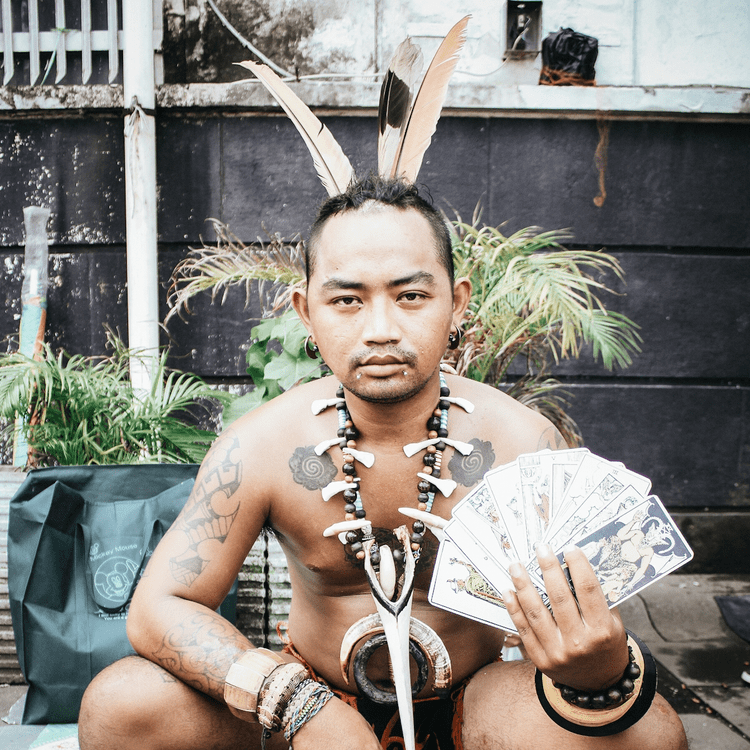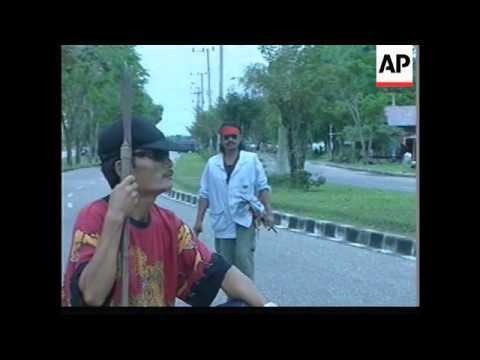Start date February 2001 | ||
 | ||
Similar Sambas riots, May 1998 riots of Indonesia, Tanjung Priok massacre | ||
The Sampit conflict was an outbreak of inter-ethnic violence in Indonesia, beginning in February 2001 and lasting throughout the year. The conflict started in the town of Sampit, Central Kalimantan Province, and spread throughout the province, including the capital, Palangkaraya. The conflict was between the indigenous Dayak people and the migrant Madurese from the island of Madura.
Contents

It broke out on February 18, 2001 when two Madurese were attacked by a number of Dayaks. The conflict resulted in more than 500 deaths, with over 100,000 Madurese displaced from their homes. Many Madurese were also found decapitated by the Dayaks.
BORNEO: ETHNIC VIOLENCE WRAP
Background

The Sampit conflict in 2001 was not an isolated incident, as there had been previous incidents of violence between the Dayaks and the Madurese. The last major conflict occurred between December 1996 and January 1997, and resulted in more than 600 deaths. The Madurese first arrived in Borneo in 1930 under the transmigration program initiated by the Dutch colonial administration, and continued by the Indonesian government. In 1999, Malays and Dayaks joined together in Kalimantan in Indonesia to persecute and massacre Madurese during the Sambas conflict. Madurese were mutilated, raped, and killed by the Malays and Dayaks and 3,000 of them died in the massacres, with the Indonesian government doing little to stop the violence.
In 2000, transmigrants made up 21% of the population in Central Kalimantan. The Dayaks are said to be dissatisfied with the increased competition coming from the more aggressive Madurese. New laws had allowed the Madurese to assume control of many commercial industries in the province, such as logging, mining, and plantations.
There are a number of stories purportedly describing the incident that sparked the violence in 2001. One version claims that it was caused by an arson attack on a Dayak house. Rumours spread that the fire was caused by Madurese, and later a group of Dayaks began burning houses in a Madurese neighborhood.
Professor Usop of the Dayak People's Association claims that the massacres by the Dayaks were in self-defense, after Dayaks were attacked. It was claimed that a Dayak was tortured and killed by a gang of Madurese following a gambling dispute in the nearby village of Kerengpangi on December 17, 2000.
Another version claims that the conflict started in a brawl between students of different races at the same school.
Decapitations of Madurese
At least 100 Madurese were decapitated by Dayaks during the conflict. The Dayaks have a history in the ritual practice of headhunting, though the practice was thought to have died out in the early 20th century.
Response by authorities
The scale of the massacre made it difficult for the military and the police to control the situation in Central Kalimantan. Reinforcements were sent in to help existing personnel in the province. By February 18, the Dayaks assumed control over Sampit.
Authorities detained a local official, suspected of orchestrating the attacks, as one of the alleged masterminds. It is believed that these masterminds financed six individuals to instigate the riot in Sampit. Following the outbreak of violence, police apprehended several individuals involved in the initial acts of violence.
Later, on February 21, thousands of Dayaks surrounded a police station in Palangkaraya demanding the release of detainees. The police succumbed to this demand. By February 28, the military had managed to clear the Dayaks off the streets, but sporadic violence continued throughout the year.
